The annual International Food Security Assessment 2019-2029 by USDA’s Economic Research Service estimates that the share of food-insecure people in 76 low- and middle-income countries will fall from 19.3 percent in 2019 to 9.2 percent in 2029. However, some regions will face greater challenges than others—Africa South of the Sahara, while expected to improve, is […]
Featured Resources: Week of August 19
An Intergovernmental Panel on Climate Change special report (summary for policymakers | full report) explores how land use—including for agriculture and food production—contributes to climate change and how climate change affects land and food security. It finds that agriculture and forestry represented 23 percent of total net anthropogenic greenhouse gas emissions during 2007–2016 and suggests […]
Featured Resources: Week of August 5
An article in The Journal of Nutrition assesses the relative caloric prices for different food categories across 176 countries and finds that prices vary systematically across countries and partially explain international differences in the prevalences of undernutrition and overweight adults. In an IFPRI blog post, the paper’s authors—IFPRI Senior Research Fellows Derek Headey and Harold […]
Featured Resources: Week of July 22
More than 820 million people did not have enough to eat in 2018, over 9 million more than in 2017. This is the third year of increase in a row according to the annual State of Food Security and Nutrition in the World 2019 report. On July 18, IFPRI and FAO hosted a discussion on […]
Featured Resources: Week of July 8
The 44th edition of the United Nations Systems Standing Committee on Nutrition’s flagship publication, UNSCN Nutrition, explores the contexts in which consumers engage with the food system to make their decisions about acquiring, preparing, and consuming food, and the impact of such food environments on their final dietary choices. The publication includes an opening article […]
- « Previous Page
- 1
- …
- 7
- 8
- 9
- 10
- 11
- …
- 38
- Next Page »





